On a late June day, we decided to hunt for stromatolite fossils on Libby Flats of the Snowy Range of southern WY, in the Medicine Bow National Forest. These particular examples are from ~2.1bya, around the time the planet was being oxygenated by photosynthesis-capable cyanobacteria like the ones that formed these fossils.
These fossils are the remnants of ancient bacterial colonies. The layering reflects a process wherein microbial mats are covered in sediment, then the bacteria works its way upwards toward the sun, then is covered in sediment, and on and on.
This example is more than 3′ tall. In the background is the majestic granite of Medicine Bow Peak.
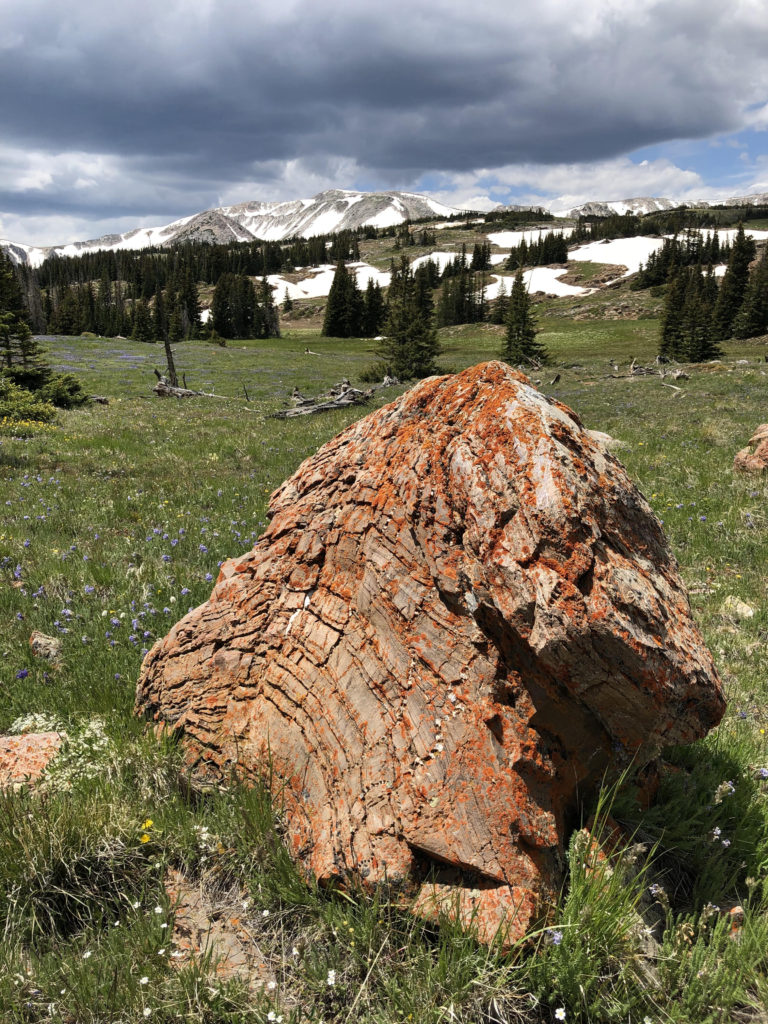
It’s fascinating to think about the processes by which these particular examples, originally formed in shallow seas and lagoons, made their way to 11k’ above sea level, where they now reside. Presumably, the stromatolites here have been chipped away, or exposed, during periods of glaciation.
Here’s a bit on the geology of this region, from Wikipedia.
The Medicine Bow Mountains resulted from continental compression during the Laramide Orogeny. Beginning about 70 million years ago, the Rockies began uplifting along thrust faults that broke up the Precambrian granite of Earth’s crust. By 50 million years ago, all of Wyoming’s major mountain ranges were elevated and the major basins defined. Rocks exposed along the flanks and peaks of the Medicine Bow Mountains span the Precambrian to modern, with the peaks composed of 2.4-2.0 billion year old Medicine Peak Quartzite. This rock was once a shallow marine sand deposit that has since been compressed and heated during burial, forming the metamorphic rock, quartzite. What may be traces of multicellular animals are preserved in this rock, making it of particular interest to paleontologists.
Some of the stromatolites were lifted onto their sides, as reflected by their current position. Because photosynthesis was involved, the original formations would have grown toward the sun. Note the colorful lichen growing on these.
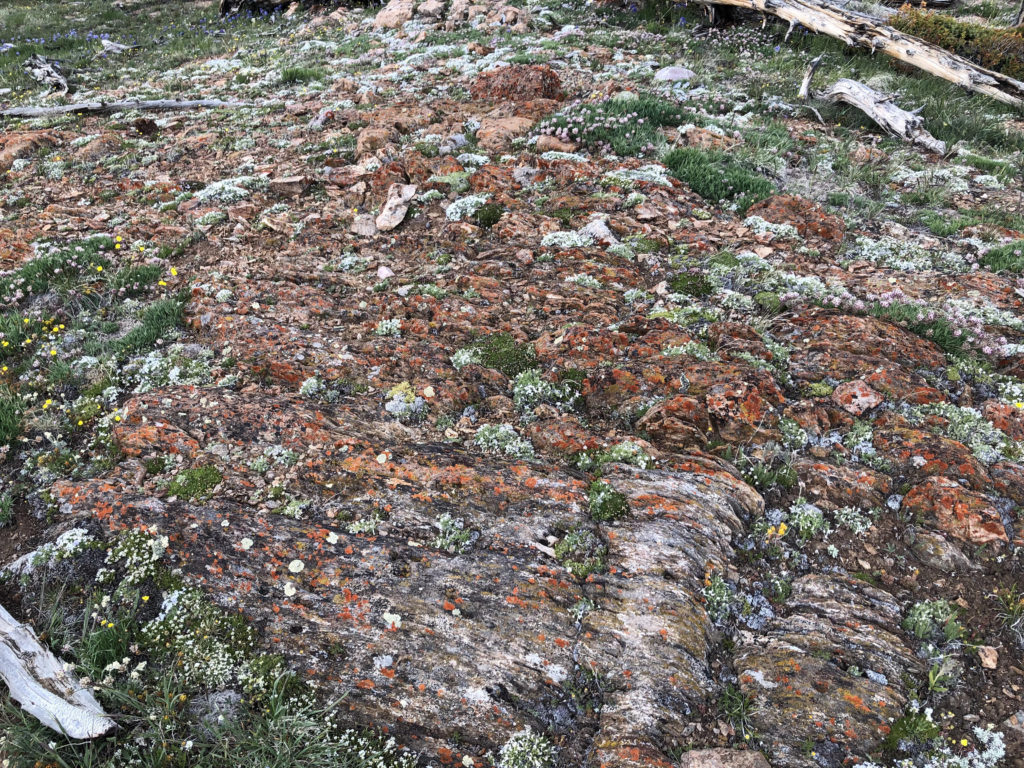
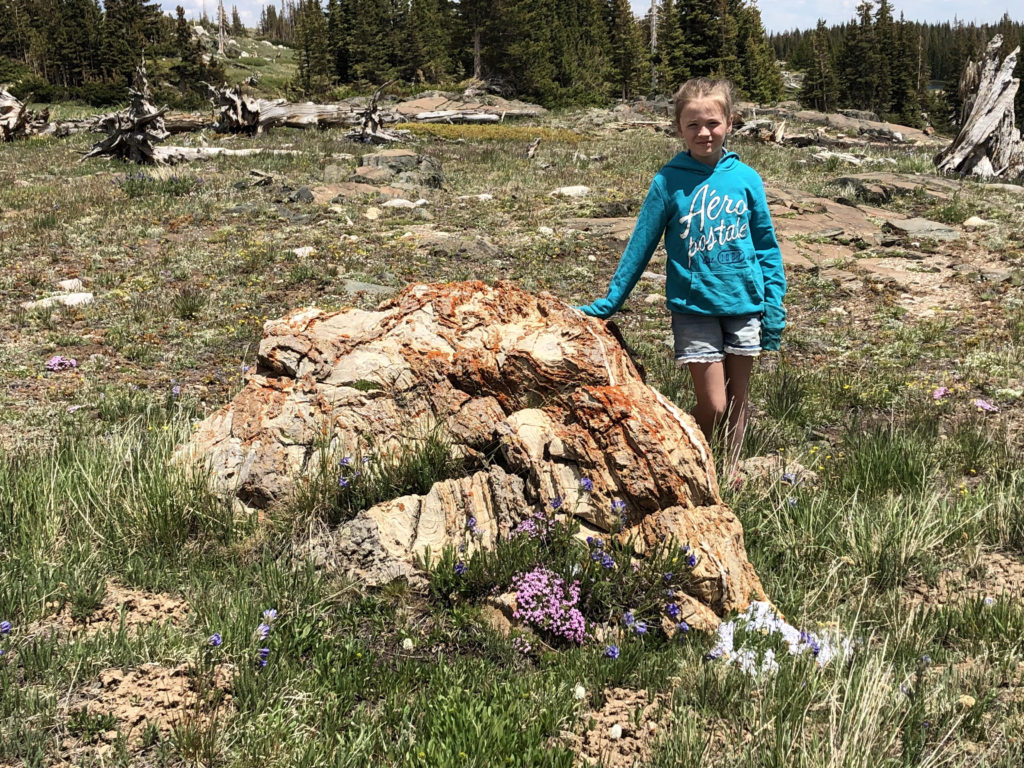
Many of the examples are quite large. Here Charlie is protecting his face from a brief flurry of snow and hail.
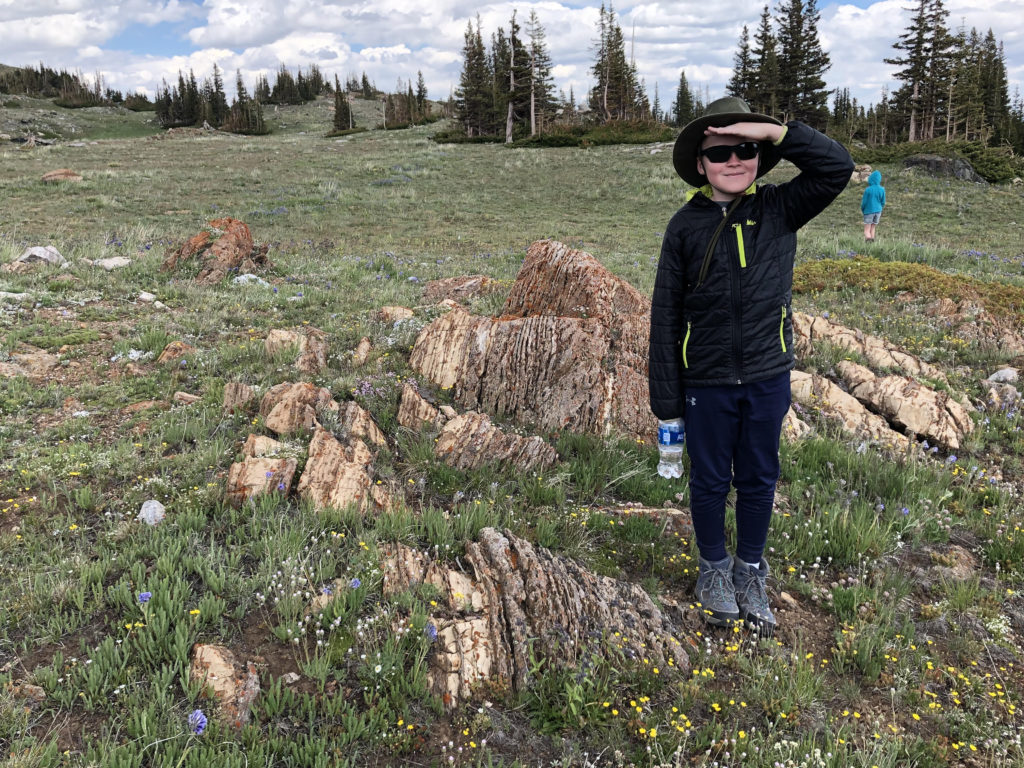
This isn’t a stromatolite, just some pretty spring bloom greeting us on the flats.
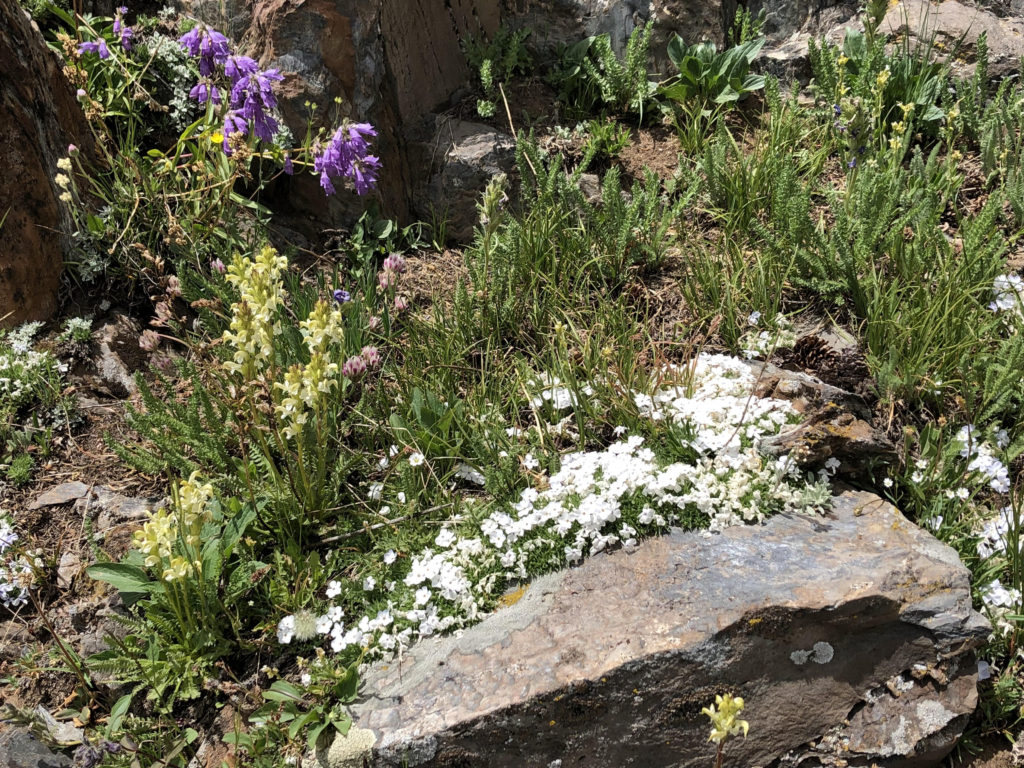
As a reference to find the stromatolite location, we used Self-guided Walking Tour of Paleoproterozoic Stromatolites in the Medicine Bow Mountains, Wyoming. The guide provides helpful background on stromatolites. However, we found no sign of the abandoned two-track road to which the directions refer. After we parked, we had to fan out and search for the formations, which are less than a mile off of Rt 130. It was well worth the effort.
If you’re going to try to find the formations, follow the walking tour’s driving directions to where it talks about turning onto a dirt road off of Rt. 130 (a.k.a. Snowy Range Scenic Byway). Follow the dirt road for about a half mile until you see a lake on the left. Park in front of the boulders. The stromatolite field is to the north-northwest, across the lake. It’s not a long walk. Walk around the left (west) side of the lake, following the shoreline as it turns north. Continue up the hill. When you reach the far side of the lake, turn back towards the dirt road. The stromatolite field is directly behind you. Once you’re in the field, you may be able to pick up the walking tour’s waypoints.
This region gets slammed with snow each winter, and late into the spring. It’s not uncommon to encounter snow and hail showers during the summertime. Storms come up quickly. Plan and dress accordingly, and be ready to head back to your vehicle quickly in the event of an electrical storm.
The closest town is Centennial, WY, which you’ll pass if you’re entering the Snowies from the east on Rt. 130. Centennial has a small convenience store/gas station, along with several restaurants, and lodging. The pizza at Beartree Tavern & Cafe is to die for.
Although it’s not known for being home to grizzlies or brown bear, I tend to carry bear spray when I’m in Snowy Range, as there are bears in the area. I’m particularly cautious in less populated, off-trail areas like this corner of Libby Flats.
You may catch a glimpse of elk or moose.
There are many hiking trails in the area. One of my favorites is one leading to Medicine Bow Peak via Lewis Lake Trailhead. Access the trailhead via the turnoff for Sugarloaf Recreation Area, which is a few miles west on Rt. 130.
There are also many campgrounds in Medicine Bow National Forest. Check at the visitor’s center west of Centennial for availability. Most or all campsites are first-come, first-served. If you’re planning to camp, claim your spot first, then do some fossil hunting.
Cell phone coverage is non-existent. Even in Centennial, it’s spotty at best.
Here’s Kaia surveying another part of Libby Flats. The Libby Flats area is approximately 3 hours northwest of Denver, CO, and 45 minutes west of Laramie, WY.
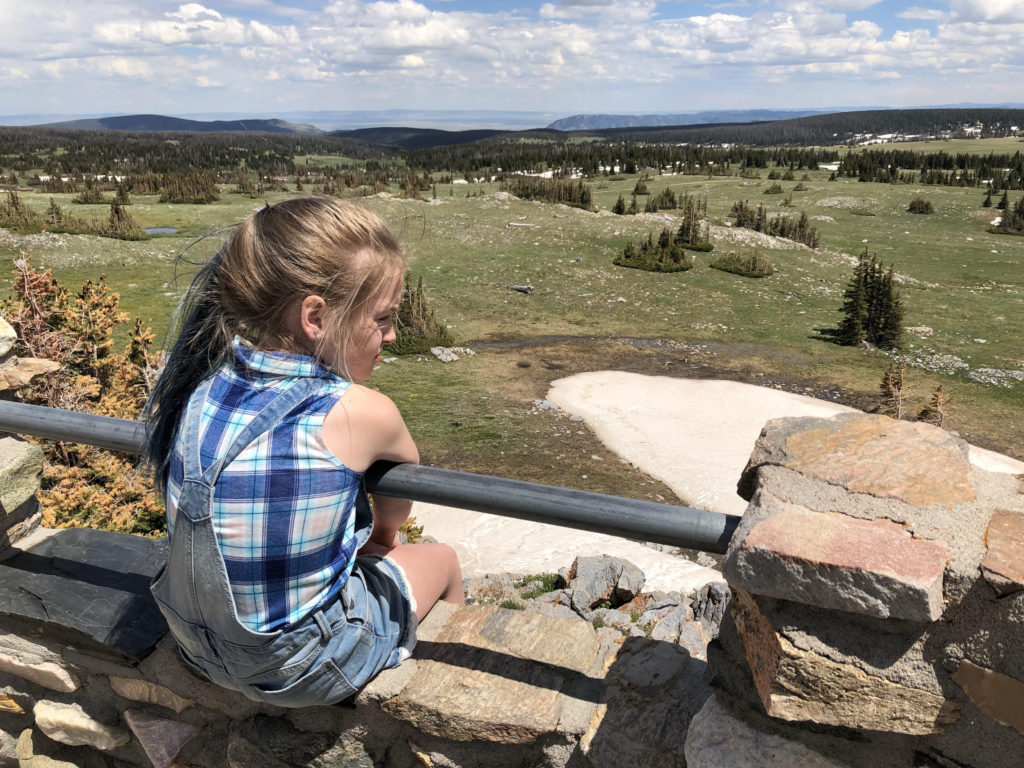
There are examples of stromatolite formation underway today, as in this example in Shark Bay, Australia.
June 2018
Related:
Burgess Shale/Walcott Quarry Fossil Site Hike
Medicine Bow Peak / Lewis Lake Trail Hike, Snowy Range, Wyoming
